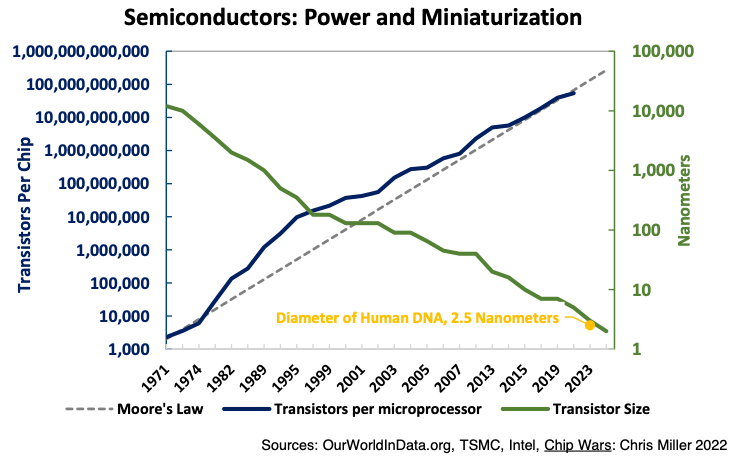
The emergence of open-source artificial intelligence (AI) programs that use natural language processing led to AI becoming the trending topic around both Wall Street and Silicon Valley in early 2023. “AI is a triad of computing power, algorithms, and data.” according to author Ben Buchanan of Georgetown. Among the three, we want to talk about semiconductors, specifically high-end logic chips, where unimaginable growth in computing power is not only bringing AI to life, but also conflict.
The booming interest in AI coincides with the release of Chris Miller’s book, Chip Wars, the FT business book of the year for 2022. Miller makes a compelling argument that semiconductors are the most critical global resource and there is an active “chip war” between the China and the U.S. to control this technology. The stakes for businesses and governments are enormous. For example, paraphrasing Eric Schmidt, former CEO of Google – “AI’s impact on warfare could be as powerful as nuclear weapons.”
Two companies dominate the critically important production of logic chips, arguably making them the most strategically important companies in the world. ASML, a Dutch company, is the only producer of the most complex machine ever created, an EUV
lithography machine, which prints 3-nanometer designs into silicon. Taiwan Semiconductor dominates the final production of high-end logic chips with over 90% market share. ASML’s machines and TSMC’s foundries are cramming so many transistors onto chips that the investment and expertise needed to challenge their market leadership is difficult to replicate. Control of Taiwan and access to ASML’s machines have become flashpoints in U.S./China relations.
Just as governments will look to use AI and chips to dominate each other, companies will use these technologies to gain a competitive advantage. AI, being a disruptive change, will create challenges for some companies and opportunities for others. It is too early to predict winners and losers, but AI and the chip war are poised to have massive implications for political power, corporate profits, and ultimately investor returns.